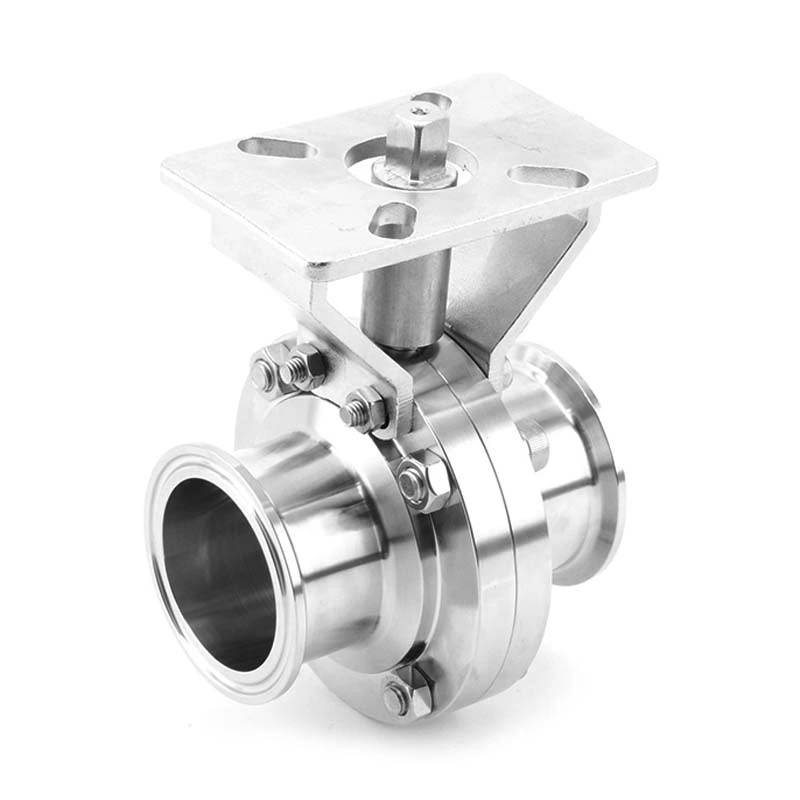Leakage Causes And Prevention Methods Of Leakage-proof Butterfly Valve
Sanitary Butterfly Valve Leakage causes and prevention methods
Leakage of the stuffing box of imported butterfly valves is called external leakage, and the closing part is called internal leakage. Closing part leakage is inside the valve and is not easy to find. Closing part leakage can be divided into two categories: one is sealing surface leakage, and the other is sealing ring root leakage.
The reasons for leakage of imported butterfly valves are:
1. The sealing surface is not well ground;
2. The sealing ring is not tightly matched with the valve seat and valve disc;
3. The connection between the valve disc and the valve stem is not reliable;
4 The valve stem is bent and twisted, causing the upper and lower closing parts to be misaligned;
5 The imported ball valve closes too quickly, and the sealing surface is not in good contact or has been damaged for a long time;
6 Improper material selection cannot withstand the corrosion of the medium;
7 The stop valve and gate valve are used as regulating valves. The sealing surface of the pneumatic actuator cannot withstand the erosion of high-speed flowing media;
8 Some media gradually cool down after the valve is closed, causing fine cracks on the sealing surface, which can also cause erosion;
9 Some sealing surfaces are connected to the valve seat and valve disc by threads, which are prone to oxygen concentration difference cells, corrosion and loosening;
10 Due to the embedding of impurities such as welding slag, rust, dust, or mechanical parts falling off in the production system and blocking the valve core, the valve cannot be closed tightly.
The prevention measures for leakage of the closing parts of imported butterfly valves are as follows:
1 Before use, the pressure test must be carefully conducted. If the sealing surface or the root of the sealing ring of the imported ball valve is found to be leaking, it must be handled before use;
2 Check whether the various parts of the valve are intact in advance. Do not use valves with bent stems or unreliable connections between the valve disc and the valve stem;
3 When closing the valve, it is necessary to use it steadily, not violently. If the contact between the sealing surfaces is poor or obstructed, the pneumatic actuator should be opened slightly immediately to allow the debris to flow out, and then carefully close it;
4 When selecting a valve, not only the corrosion resistance of the valve body but also the corrosion resistance of the closing parts should be considered;
5 The valve should be used correctly according to its structural characteristics. Components that need to adjust the flow should use regulating valves;
6 For the case where the medium cools after closing the valve and the temperature difference is large, the valve should be closed again after cooling;
7 When the valve seat, valve disc and sealing ring are connected by threads, polytetrafluoroethylene tape can be used as filler between the threads to make it free of gaps;
8 For valves that may fall into impurities, a filter should be added before the valve.
